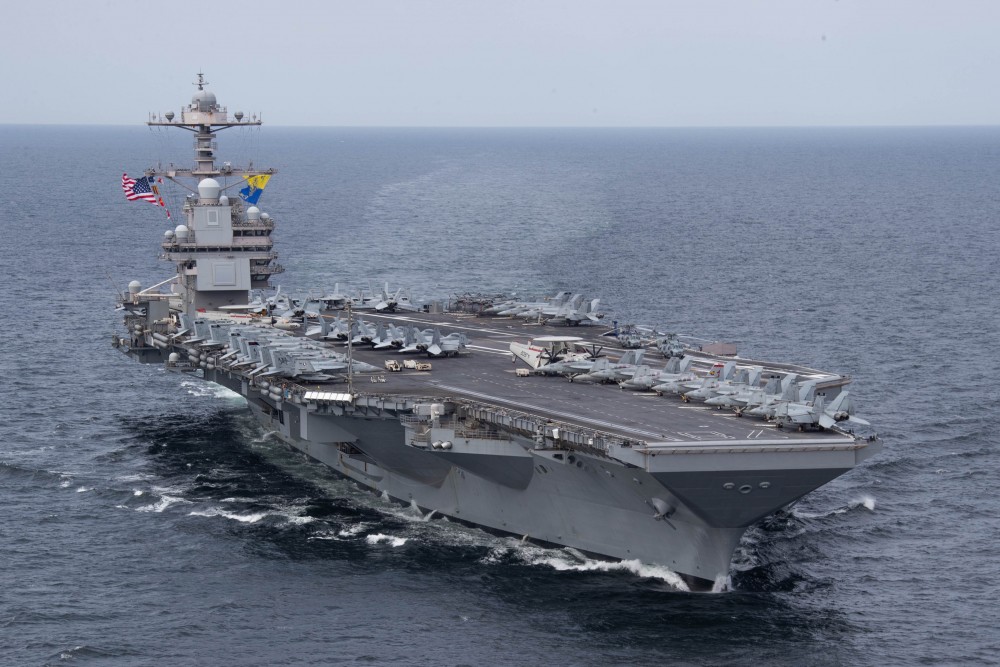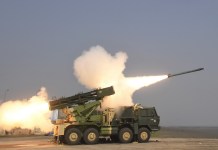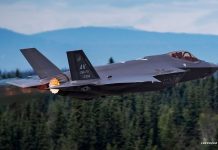When the USS Gerald R. Ford (CVN-78), the world’s largest aircraft carrier, was commissioned in July 2017, it was heralded as a harbinger of a new era of flattops thanks to its revolutionary Electromagnetic Aircraft Launch System (EMALS) technology.
The aircraft carrier, which displaces a massive 100,000 tonnes, started a new tech and weapons race with China, which decided to adopt EMALS technology on its third aircraft carrier, Fujian.
Earlier this month, China conducted sea trials on Fujian, during which three aircraft —the fifth-generation stealth fighter jet J-35, J-15T, and carrier-based KJ-600 early warning and control aircraft —took off from the carrier using EMALS technology.
Fujian is expected to be commissioned into the PLA Navy (PLAN) in the coming days.
Meanwhile, China is also working on its next aircraft carrier, the Type 004, which is reportedly nuclear-powered and also features an Electromagnetic Aircraft Launch System.
However, it seems the US has decided to opt out of this burgeoning arms race featuring massive aircraft carriers equipped with advanced EMALS technology.

Speaking to US sailors aboard the aircraft carrier USS George Washington at the US Navy base in Yokosuka, Japan, President Donald Trump said he plans to sign an executive order that would compel the U.S. Navy to use steam-powered catapults and hydraulic elevators on new aircraft carriers.
So, why is President Trump against the world’s largest aircraft carrier, the USS Gerald R. Ford, and its revolutionary EMALS technology?
Why is the US planning to abandon the EMALS technology, less than a decade after it first featured on its most advanced carrier?
Trump’s Many Complaints Against EMALS Tech
Speaking on the Nimitz-class carrier USS George Washington on October 28, Trump said, “I’m putting out an order, I’m going to sign an executive order, when we build aircraft carriers, it’s steam for the catapults and it’s hydraulic for the elevators. Do you agree? Everybody agrees.”
Criticising the EMALS, the President said that the technology is expensive, unreliable, and difficult to repair.
“They’re spending billions of dollars to build stupid electric. And the problem, when it breaks, you have to send up to MIT, get the most brilliant people in the world, fly them out. The steam, they said they can fix it with a hammer and blowtorch. And it works just as well, if not better.”
Making a case for steam catapults, the President said that they worked very well for the U.S. Navy for nearly half a century.
“They had steam, which worked so beautifully, and it has for 50 years, right? So we’re gonna go back. Seriously, fellas, I want to make that change. I’m gonna do an executive order,” he added.
“I’m not going to let them continue to do this thing. They’re trying to make it work, they’re trying so hard, and they have something that’s perfect. So we’re going to go back on that and the magnets.”
Notably, this is not the first time that Trump has rallied against EMALS. He criticised it during his first term as well.
In 2017, Trump called the Electromagnetic Catapults “no good.”
Furthermore, during a 2019 Navy visit to Japan, he called the system “crazy electric” and “very, very complex.” He indicated that he would order the Navy to abandon those features, but never followed through.
Steam Vs Electromagnetic Catapults
Currently, only two carriers in the world feature EMALS technology: the USS Gerald R. Ford and the Chinese Fujian (yet to be commissioned).
Ten out of the 11 active US carriers feature steam catapults. All 10 of the older Nimitz-class carriers use steam-powered catapults.
Meanwhile, China’s two active aircraft carriers – Liaoning (Type 001) and Shandong (Type 002) – both feature Short Take-Off But Arrested Recovery (STOBAR) operations.
Catapults are critical to aircraft carrier operations because they allow heavier aircraft, including strike jets, refuellers, AWACS, and AEW&C, to take off from short flight decks.
The purpose of the EMALS was to launch aircraft more efficiently and with less stress on both the equipment and the airframes.

The US began developing EMALS technology in the first decade of the 21st century, after using steam catapults on its Nimitz-class carriers for nearly half a century. In contrast, China skipped the steam catapult generation entirely and jumped directly from STOBAR operations to EMALS. China adopted EMALS technology on its latest carrier, Fujian.
Compared to steam catapults, electromagnetic launch systems offer finer control, better efficiency, and adjustable launch power.
However, they are expensive to build and maintain, require massive power, and suffer from reliability issues.
In this sense, there is some truth to Trump’s criticism of EMALS.
A 2019 Pentagon report highlights how the troublesome electromagnetic catapults and new arresting gear on the USS Gerald R. Ford performed terribly during at-sea trials over the past two years.
According to a 2018 Bloomberg report, citing the annual review of the Office of the Director of Operational Test and Evaluation (DOT&E), EMALS suffered 10 “critical failures” across 747 aircraft launches during at-sea trials since USS Gerald R Ford’s delivery in 2017.
The Advanced Arresting Gear (AAG) had 10 “operational mission failures” over the course of 763 landing attempts in that same time frame, it said.
This, even though at US$13 billion, the USS Gerald R. Ford is the world’s most expensive aircraft carrier.
According to the Bloomberg report, the EMALS was experiencing a critical failure once every 455 launches, which was 9 times the Navy’s desired rate.
Similarly, the carrier’s 11 Advanced Weapons Elevators, or AWEs, which help move ordnance and other aircraft stores to and from the main flight deck to the ship’s magazines, also suffered repeated failures.

Similarly, a DOT&E report published earlier this year lamented that, despite software and hardware upgrades, the USS Gerald R. Ford’s reliability statistics have not improved substantially.
“Despite engineering upgrades to hardware and software, reliability has not appreciably changed from prior years, and reliance on off-ship technical support remains a challenge,” the DOT&E report said.
“As part of an effort to provide short- and long-term improvements to address EMALS reliability degraders, NAVAIR delivered a software update and upgraded all catapult position sensor blocks prior to CVN 78’s deployment, and is continuing development on further
improvements,” it added.
Similarly, the DOT&E report highlights reliability issues with the Advanced Arresting Gear (AAG) aboard the USS Gerald R. Ford.
“Despite some software and hardware improvements in AAG, reliability has not appreciably changed because the FY23 data reflects many short-duration failures that were unreported in the developmental test, as well as system-of-systems degradations, all of which would have prevented landing.”
“NAVAIR continues to work on short and long-term improvements to address AAG reliability degraders. However, difficulties such as obtaining replacement parts and the reliance on off-ship technical support remain a challenge,” it added.
In theory, the EMALS and AAG were supposed to improve the USS Gerald R. Ford’s sortie rate; however, due to persistent issues and repeated breakdowns, the carrier’s sortie rate is lower than that of the 50-year-old steam catapult launch system.
However, changing the EMALS to a steam catapult in the upcoming Ford-class carriers would be neither easy nor cheap. Catapults and AAGs are integral to carriers and cannot be easily changed.
Furthermore, introducing a fundamental change to future carriers might push their timelines even further.
It remains to be seen whether Trump will actually follow through on his threat to direct the US Navy to revert to steam catapults and hydraulic elevators on new aircraft carriers, or it’s an empty threat like his first term, when he made similar suggestions, but never followed through.
- Sumit Ahlawat has over a decade of experience in news media. He has worked with Press Trust of India, Times Now, Zee News, Economic Times, and Microsoft News. He holds a Master’s Degree in International Media and Modern History from the University of Sheffield, UK.
- VIEWS PERSONAL OF THE AUTHOR.
- He can be reached at ahlawat.sumit85 (at) gmail.com




